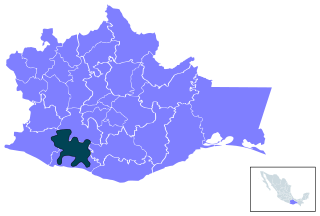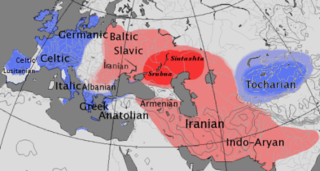Related Research Articles
Click consonants, or clicks, are speech sounds that occur as consonants in many languages of Southern Africa and in three languages of East Africa. Examples familiar to English-speakers are the tut-tut or tsk! tsk! used to express disapproval or pity, the tchick! used to spur on a horse, and the clip-clop! sound children make with their tongue to imitate a horse trotting. However, these paralinguistic sounds in English are not full click consonants, as they only involve the front of the tongue, without the release of the back of the tongue that is required for clicks to combine with vowels and form syllables.
Velars are consonants articulated with the back part of the tongue against the soft palate, the back part of the roof of the mouth.
A labialized velar or labiovelar is a velar consonant that is labialized, with a -like secondary articulation. Examples are, which are pronounced like a, with rounded lips, such as the labialized voiceless velar plosive and labialized voiced velar plosive, obstruents being common among the sounds that undergo labialization.
Labial–velar consonants are doubly articulated at the velum and the lips, such as. They are sometimes called "labiovelar consonants", a term that can also refer to labialized velars, such as the stop consonant and the approximant.

The Oto-Manguean or Otomanguean languages are a large family comprising several subfamilies of indigenous languages of the Americas. All of the Oto-Manguean languages that are now spoken are indigenous to Mexico, but the Manguean branch of the family, which is now extinct, was spoken as far south as Nicaragua and Costa Rica. Oto-Manguean is widely viewed as a proven language family.

The Zapotec languages are a group of around 50 closely related indigenous Mesoamerican languages that constitute a main branch of the Oto-Manguean language family and are spoken by the Zapotec people from the southwestern-central highlands of Mexico. A 2020 census reports nearly half a million speakers, with the majority inhabiting the state of Oaxaca. Zapotec-speaking communities are also found in the neighboring states of Puebla, Veracruz, and Guerrero. Labor migration has also brought a number of native Zapotec speakers to the United States, particularly in California and New Jersey. Most Zapotec-speaking communities are highly bilingual in Spanish.

The Chatinos are an indigenous people of Mexico. Chatino communities are located in the southeastern region of the state of Oaxaca in southern central Mexico. Their native Chatino language are spoken by about 23,000 people, but ethnic Chatinos may number many more. The Chatinos of San Juan Quiahije call themselves neq-a tnya-j and their language Chaq-f tnya-b.

Chatino is a group of indigenous Mesoamerican languages. These languages are a branch of the Zapotecan family within the Oto-Manguean language family. They are natively spoken by 45,000 Chatino people, whose communities are located in the southern portion of the Mexican state of Oaxaca.
The phonology of Sesotho and those of the other Sotho–Tswana languages are radically different from those of "older" or more "stereotypical" Bantu languages. Modern Sesotho in particular has very mixed origins inheriting many words and idioms from non-Sotho–Tswana languages.
Taos is a Tanoan language spoken by several hundred people in New Mexico, in the United States. The main description of its phonology was contributed by George L. Trager in a (pre-generative) structuralist framework. Earlier considerations of the phonetics-phonology were by John P. Harrington and Jaime de Angulo. Trager's first account was in Trager (1946) based on fieldwork 1935-1937, which was then substantially revised in Trager (1948). The description below takes Trager (1946) as the main point of departure and notes where this differs from the analysis of Trager (1948). Harrington's description is more similar to Trager (1946). Certain comments from a generative perspective are noted in a comparative work Hale (1967).
Jalapa Mazatec is a Mazatecan language. An estimate from 1990 suggested it was spoken by 15,000 people, one-third of whom are monolingual, in 13 villages in the vicinity of the town of San Felipe Jalapa de Díaz in the Tuxtepec District of the Mexican state of Oaxaca. A 2016 study, published in 2019, estimated the Mazatec dialects to have 220,000 speakers. Egland (1978) found 73% intelligibility with Huautla, the prestige variety of Mazatec. Literacy in Jalapa is taught alongside Spanish in local schools.
Izi is an Igboid language spoken in Ebonyi state in Nigeria. It forms a dialect cluster with the closely related languages Ikwo, Ezza, and Mgbo.

Languages of the Indo-European family are classified as either centum languages or satem languages according to how the dorsal consonants of the reconstructed Proto-Indo-European language (PIE) developed. An example of the different developments is provided by the words for "hundred" found in the early attested Indo-European languages. In centum languages, they typically began with a sound, but in satem languages, they often began with.
Wahgi is a Trans–New Guinea language of the Chimbu–Wahgi branch spoken by approximately 100,000 people in the highlands of Papua New Guinea. Like other Chimbu languages, Wahgi has some unusual lateral consonants.
Tataltepec Chatino, also known as Lowland Chatino and Chatino Occidental Bajo, is an indigenous Mesoamerican language, one of the Chatino family of the Oto-Manguean languages. It is not intelligible with other Chatino languages. It is named after the town of Tataltepec de Valdés, and is also spoken in San Pedro Tututepec.
Zacatepec Chatino is an indigenous Mesoamerican language, a dialect of Eastern Chatino of the Oto-Manguean language family. It is often referred to as Chaqꟳ tinyaᴶ Kichenᴬ tziꟲ, Chatino de San Marcos Zacatepec, or Chatino de Zacatepec as it is distinct from other Eastern Chatino dialects in the region. Zacatepec Chatino is spoken in the town of San Marcos Zacatepec, a town of approximately 1,000 people and inhabited by the Chatino people. The language was once spoken in the village of Juquila, but is now virtually extinct there with only two surviving speakers in the area.
Zenzontepec Chatino, also known as Northern Chatino, or "Chatino Occidental Alto" is an indigenous Mesoamerican language, one of the Chatino family of the Oto-Manguean languages. It is not intelligible with other Chatino languages. It is spoken by one of the most isolated groups in Oaxaca, the Chatino people in the municipalities of Santa Cruz Zenzontepec and San Jacinto Tlacotepec, and in the former municipality of Santa María Tlapanalquiahuitl.
Texmelucan Zapotec is an Oto-Manguean language of the San Lorenzo Texmelucan Municipality in western Oaxaca, Mexico. It is a divergent Zapotec language, having only 10% intelligibility with its closest relative, Zaniza Zapotec. Both go by the name Papabuco.
References
- ↑ Smith Stark, Thomas C. (2007). Algunas isoglosas zapotecas. México: Universidad Nacional Autónoma de México and Instituo de Investigaciones Antropológicas and Instituto Nacional de Lenguas Indígenas. pp. 69–131. ISBN 978-970-32-3248-2.
- ↑ Mechling, William H. (1912). "The Indian Linguistic Stocks of Oaxaca, Mexico". American Anthropologist. 14 (4): 643–682. doi: 10.1525/aa.1912.14.4.02a00080 . ISSN 0002-7294.
- ↑ Suárez, Jorge A. (1972). "La clasificación del papabuco y del solteco". Anuario de Letras. 10: 219–232.
- ↑ Sicoli, Mark A. (2015). Agency and verb valence in Lachixío Zapotec. John Benjamins Publishing Company. pp. 193–194. ISBN 9789027267788.
{{cite book}}:|work=ignored (help) - ↑ Smith Stark, Thomas C. 1999. El solteco y el zapoteco occidental: Un aprecio a partir de los vocabularios de Peñafiel. Ms. https://ailla.utexas.org/islandora/object/ailla:243828
- 1 2 Sullivant, J. Ryan (2016). "Reintroducing Teojomulco Chatino". International Journal of American Linguistics. 82 (4): 393–423. doi:10.1086/688318. ISSN 0020-7071. S2CID 151822311.